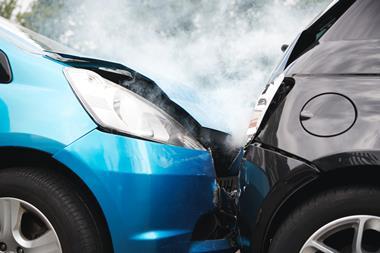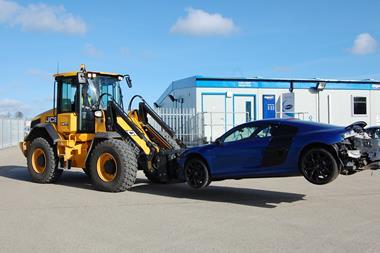Last month, the net average repair cost estimation also reached a two-year high of more than £2,000
The volume of new work instructions from UK motor insurers to repair body shops dipped by 80% in mid-April compared to the first three months of the year because the national lockdown measures, imposed to fight the spread of coronavirus, suppressed vehicle use and consequently reduced the number of accidents that occurred.
This insight was revealed in the latest analysis produced by software firm Audatex UK, which collated the data, and broker Willis Towers Watson.
The analysis further tracked repair costs, both before and during the Covid-19 pandemic lockdown.
In the 12 weeks prior to the lockdown being implemented, the net average repair cost estimation, excluding VAT, was consistent around the £1,850 mark.
Despite this figure falling by £100 during the first week of lockdown, from 23 March, the average repair cost then jumped up in April to reach a two-year high; for the first three weeks of April, the average repair estimate was constantly above £2,000 – the peak repair cost estimate to date has reached £2,147, which is a 16% uptick compared to the first 12 weeks of 2020.
Audatex’s data showed that this repair cost hike is not associated with amended labour rates – instead, it is the average cost of parts that has risen sharply in April.
These higher costs are usually associated with more severely damaged vehicles, which implies that non-driveable vehicles are being prioritised for mending by insurers and body shops during this period.
Taking time
It is also taking body shops longer to generate repair cost estimates, reinforcing that repairs are more severe. For example, prior to the coronavirus outbreak, 60% of new instructions sent by insurers would have a repair estimate created within the week by the repairers – this figure dropped to 24% for April.
Neil Garrett, sales director at Audatex UK, said: “With both body shops and customers keen to maintain the social distancing guidelines, insurers and their network have been triaging which vehicles to take in for repair and it has been a logical step, for all concerned, to focus on mobility as the top priority and to turn attention to the vehicles which are damaged but driveable once there is a lifting of the lockdown restrictions.
“As a result, repair body shops now have a building back log of jobs to work through. The data indicates that for some, this started to build up in the weeks leading up to the official UK lockdown and many could find they already have the equivalent of three weeks of ‘normal’ level job volumes to be actioned. Although, these will likely be ‘light’ to ‘moderate’ repair works, given that the more severely damaged vehicles are being repaired.”
However, this figure is juxtaposed against ‘key to key’ timings – the length of time between the repairer taking the customer’s car and then returning it to them fully repaired. Typically, the key to key time is 10 days, but this has now been halved during the lockdown period; these statistics, however, could be impacted by the number of quicker, temporary repair jobs that are also taking place.
Tom Helm, head of claims consulting at Willis Towers Watson, added: “Working from the initial repair decision-making date to when an invoice is generated, the ‘key-to-key’ time has historically averaged at over 10 days.
“During the lockdown, however, this timeframe has on average dropped below five days. This is particularly impressive when considering much of the work relates to more severely damaged vehicles that are typically more complex and time-consuming repairs.”
Lessons learned
Helm identified some key action points that motor insurers will need to consider moving forwards. This includes:
- How to bring repair backlogs down while keeping staff and customers safe.
- How to cope with potential critical parts shortages.
- Review operations to analyse success when staff are working from home.
- Review operations in keeping key workers mobile.
- Identify improvement opportunities for use in future emergencies.
“Analysing how the timeframe from incident date to return of vehicle to customer radically reduced on average by five days is likely be high on the list of most insurers,” Helm said.
“Did temporary repairs simply play a key part or might it actually be feasible to deliver this faster timeframe as a new service benchmark in the long term?”
Hosted by comedian and actor Tom Allen, 34 Gold, 23 Silver and 22 Bronze awards were handed out across an amazing 34 categories recognising brilliance and innovation right across the breadth of UK general insurance.




















































No comments yet